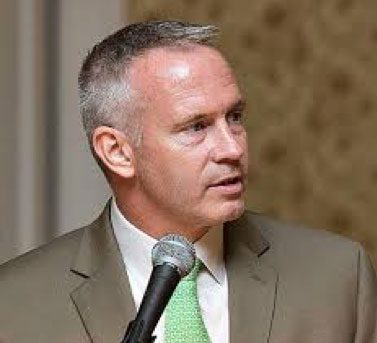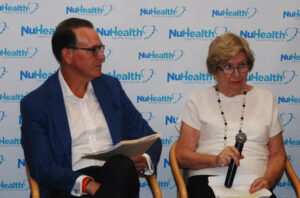By Robert Traverso
Part two in an ongoing series on opioid addiction on Long Island.
In Nassau County alone, nearly 200 people died from opioid-related overdoses in both 2017 and 2018.
“The issue is that the epidemic is a little bigger than they thought it could get… and it’s hard to get people care,” said Dan Boylan, who has been the director at Phoenix House’s residential treatment center in Wainscott, in East Hampton, for a decade.
Boylan, who has worked in drug treatment since 1996, spoke about a frequently discussed problem related to the opioid crisis: the vicious cycle of addiction and re-addiction that many opioid users get trapped inside, some literally right after being released from the hospital.
Hospitalization in both Nassau and Suffolk counties for opioid-related overdoses in 2016 — the last year for which there is state-provided data — was sizable, according to the New York State Opioid Annual Data Report, released last year.
The concern is what happens to a patient after leaving the hospital if an overdose is non-fatal. Part of the trouble: Addicts just aren’t being placed in long-term care following an overdose.
“When a person overdosed and was taken to the hospital, medical protocol required the patient to be stabilized and released back into the community in the worst throes of withdrawal — it still does,” explained Brendan Brosh, director of communications for the Nassau County District Attorney’s Office.
“Releasing a person onto the streets in that condition would ultimately end in death,” Brosh continued, adding that “research shows that immediacy in treatment can be the difference between success and relapse.”Hear what Dr. Jeffrey Reynolds as to say here. Audio by Robert Traverso/Long Island Advocate
Jeffrey Reynolds, president and CEO of the Family and Children’s Association , expressed a similar view: “One of the things we saw early on [during the opioid crisis] is you had folks who were transported… to the hospital… and for one reason or another were back out in a parking lot two hours later only to be dead of a subsequent overdose.”

In both Nassau and Suffolk counties, there are a number of organizations and partnerships, working to close this cycle by providing long-term care following discharge from the hospital.
One such partnership was announced lastApril by Nassau County District Attorney Madeline Singas, a Democrat, who said a partnership had been established between her office, the Nassau University Medical Center, Northwell Health/LIJ and Maryhaven Center of Hope, a service organization that is part of the larger Catholic Health Services.
As Newsday reported, officials who spoke at the announcement of the partnership voiced concern that “many people addicted to opioids and other substances return to their drug of choice shortly after leaving the emergency room, putting them at risk for another overdose.”
The pact would work to ensure that addicts who overdose receive long-term, residential care immediately following hospitalization by streamlining the admission process.
Specifically, the partnership makes sure that those being treated for an opioid overdose at two Nassau ERs — Northwell’s Long Island Jewish Medical Center in New Hyde Park and Nassau University Medical Center, the public hospital in East Meadow — are sent directly to the residential treatment program run by Maryhaven.
Maryhaven’s Center of Hope, headquartered in Port Jefferson Station, and specifically Maryhaven’s New Hope Stabilization/Crisis Center in Freeport, are a major part of the effort in Nassau County to halt the cycle of re-addiction.
Speaking in April about her office’s ongoing relationship with Maryhaven, Singas said of patients: “They had a safe and supportive place to go through withdrawal and to be directed to the next phase of treatment. Now there will be no delay between the hospital and help.”
Another way that Nassau residents can receive care is through the Mineola-based Family and Children’s Association, led by Reynolds. The FCA is a not-for-profit organization that provides services for the needy, including “addiction prevention, treatment and recovery” care.
The FCA operates two Family Treatment and Recovery Centers in Nassau, one in Hempstead and one in Hicksville, that provide outpatient services, some for free.
“Fees are set on a sliding scale that is based on clients’ ability to pay. No one will be denied services if they cannot afford to pay for treatment. Medicaid, Medicare and all other major” plans are accepted.
Health insurance adds an extra layer of complexity to the opioid crisis on Long Island, as it does across the U.S. For this reason, Maryhaven takes care of patients’ often daunting insurance paperwork while they remain in “detox” in the hospital. Additionally, workers at the Freeport crisis center are on call 24 hours a day, seven days a week to serve those in participating hospitals.
“This program was designed to engage the patient immediately after medical stabilization and to provide the patient with a physical place to go to start the process,” Brosh said, speaking of the partnership spearheaded by the DA’s office.
“New Hope provides a safe place to either detox or to continue medically assisted treatments while the patient’s treatment needs are assessed and a warm handoff can be arranged for the next phase of treatment.”
The next step, Reynolds said, is normalizing the involvement of people whom Reynolds and the FCA deem “peers” — individuals who have experienced a non-fatal, opioid-related overdose themselves — in the treatment process. “They are the ones counseling patients on treatment options and the way forward.”
Interestingly, when doctors and nurses ask patients if they would like to receive treatment after an overdose, 11 percent say yes, while 82 percent respond yes when asked by a peer, Reynolds said. “Who is doing the asking and how they’re asking makes a huge difference.”
“There ought to be peers in every single hospital across Long Island… having a peer in the emergency department is important,” Reynolds said. “When it’s personal, it’s a little bit different… There’s an extra layer when you suffered it yourself and you’re connecting with people who look, act and talk like you.”
On top of the Maryhaven partnership and the FCA/SHERPA services, there are many other ways for individuals in Nassau with OUD to receive care, and many do not require private health insurance.
According to a county-released “Action Plan Task Force” from October, there are currently 33 programs in Nassau that provide substance use treatment services. A comprehensive list of community-based treatment programs in Nassau can be found here.
In Suffolk, Phoenix House — which has five locations on Long Island — works to prevent addiction and provide long-term care following hospitalization.
Boylan, from Phoenix House, argues that short-term rehab following hospitalization is not sufficient. “Thirty days is not enough… It takes about 90 days after detox for the brain to start firing correctly again.”
Long-term, residential care, Boylan said, “gives guys a little bit extra time” to recover and ultimately move forward with their lives.
He said the most important part of his work is the effort that he makes to connect patients with outside organizations that they can go to for help after they leave Phoenix House. “It’s really beneficial to get a guy into treatment… so they can start to make decisions about what to do when they leave here.”
Kim Benjamin, director of the PROS (Personalized Oriented Recovery Service) Program at Phoenix House’s location in Brentwood, reiterated what her colleague said: “We work from a harm-reduction standpoint,” Benjamin said. “People relapse. They come, and they go. Our hope is that we get more time to help each patient when they come back.”
Brosh, from the Nassau D.A.’s office, echoed this sentiment: “New Hope [Maryhaven] is not the ultimate treatment provider,” he stressed.
“While the patient is in New Hope, counseling begins for the patient and the family while the staff navigates the private insurance, Medicare or Medicaid paperwork needed to continue treatment,” he said. “If a bed is not available at the next facility, the patient remains safely at New Hope until the transfer can be made.”
Regarding the health insurance side of the issue, Boylan said that 90 percent of the people who come to his Phoenix House location are covered by either Medicaid or Medicare, which there is a “lot more benefit” in having opposed to private insurance, in both Nassau and Suffolk, he said.
Under a private plan, Boylan said, a patient is limited to 60 outpatient visits; on the other hand, under Medicaid, patients are eligible for up to six months — or in some cases a totally unlimited amount — of outpatient visits.
Following their 60 visits, patients with private health insurance become ineligible for any more visits for an entire year, Boylan said. This is why outside programs are so important, as they provide care outside this gap, he added.
Like Boylan, Reynolds stressed that the issue in New York — due to a strong Medicaid system — is not having insurance, which he characterized as “not a huge issue” state-wide, but rather a lack of coverage provided by private health insurance plans.
“Until we make it easier to get treatment than it is to get heroin, then we are not going to turn the tide in this war. Most people cannot fight heroin addiction without professional help. By addressing the public health crisis, we help improve public safety,” Brosh said.









